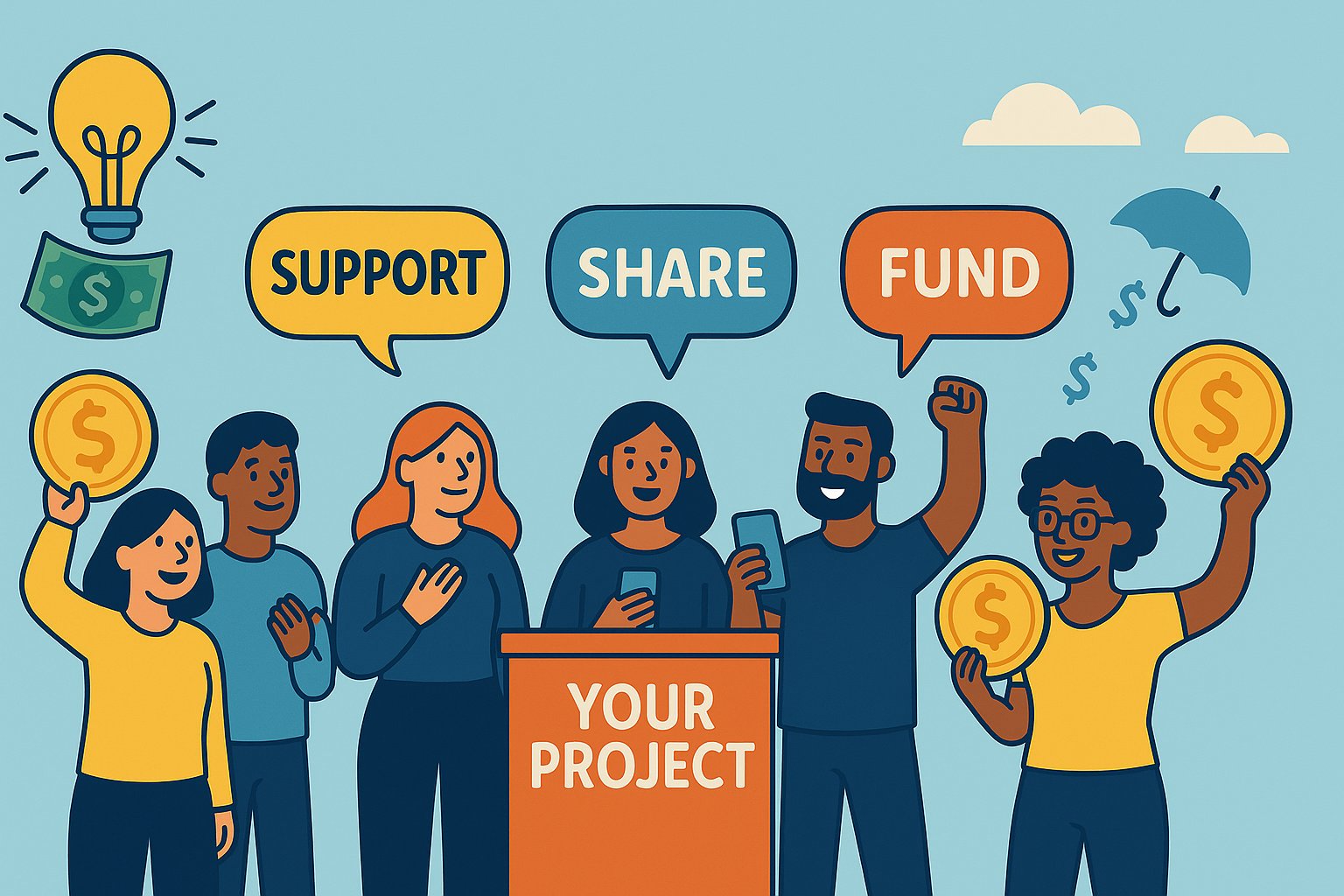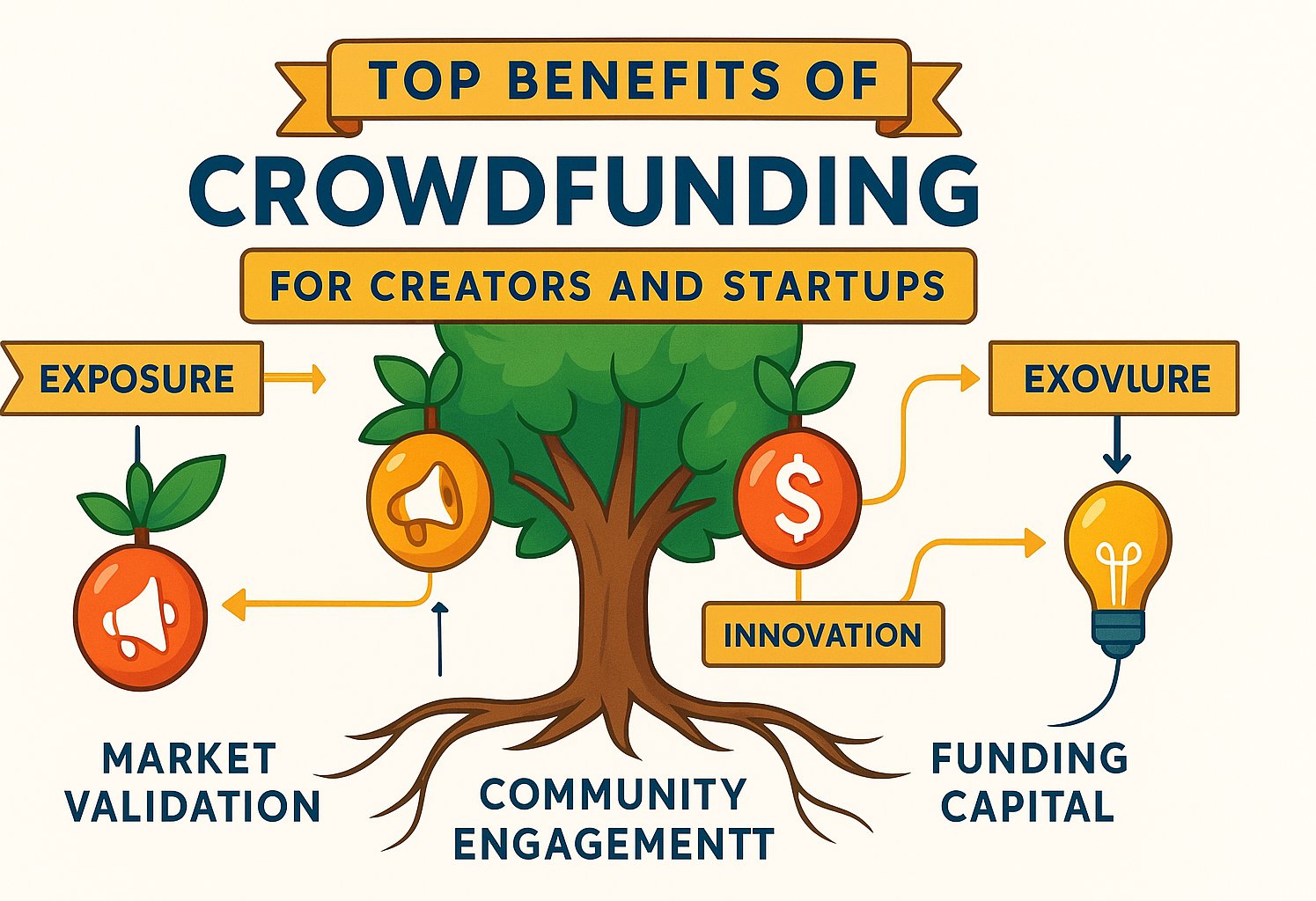Your Crowdfunding Adventure Begins Here
Embarking on a crowdfunding journey feels a bit like setting sail on uncharted waters: exhilarating, full of promise, and teeming with potential surprises. Whether you’ve sketched out prototypes on napkins or nurtured an idea in quiet contemplation, crowdfunding platforms offer you the megaphone to share your vision with people around the world. But before you hit that “launch” button, you’ll need a detailed roadmap that walks you through each wave—planning, storytelling, promotion, and fulfillment. By the time you finish reading, you’ll not only understand the mechanics of crowdfunding but also feel energized to rally your community, galvanize supporters, and bring your dream to life.
Unleash the Crowd: What Exactly Is Crowdfunding?
Imagine thousands of individuals each pledging a few dollars because they believe in your concept. That’s the essence of crowdfunding—harnessing collective enthusiasm instead of leaning on a single investor or loan. In the rewards-based model, backers receive something tangible or experiential in return—early-access products, special edition merchandise, or insider updates—whereas equity-based campaigns let contributors own a slice of your enterprise. Donation-based crowdfunding, on the other hand, connects compassionate supporters with charitable or community-driven initiatives. Each model comes with its own set of rules and expectations, from platform fees to legal disclosures, so it’s vital to choose a structure that complements your project’s nature and your goals for community-building.
Why Crowdfunding Feels Like Magic
Crowdfunding isn’t just a path to funding—it’s a stage for validation, marketing, and community-building all at once. A well-executed campaign proves market demand: you quickly learn whether people are willing to put their money where their heart is. You earn media coverage, social shares, and word-of-mouth buzz—all without spending a fortune on traditional advertising. You create an army of brand ambassadors who feel personally invested in your success, and they’ll evangelize on your behalf long after the campaign closes. Beyond the dollars raised, the feedback loop from backers guides product refinement and provides insights that only a passionate audience can deliver. In short, crowdfunding is an all-in-one incubator, marketing engine, and feedback mechanism.
Pick Your Path: Crowdfunding Models Decoded
Not every crowdfunding campaign looks the same. Rewards-based platforms like Kickstarter and Indiegogo thrive on creative projects, offering tiered incentives that range from a simple “thank you” postcard to deluxe, collector’s edition bundles. Equity crowdfunding through sites such as SeedInvest or Crowdcube transforms supporters into micro-investors, complying with securities regulations in the process. Donation-based platforms—GoFundMe, JustGiving—serve charitable causes or personal hardships, where emotional storytelling drives contributions. Understanding each model’s legal framework, fee structure, and community norms ensures you avoid pitfalls and select the right home for your campaign. Matching your project to the appropriate model is the first strategic decision that sets the stage for success.
Plotting Your Course: Strategic Pre-Launch Planning
A stellar campaign doesn’t materialize overnight. Begin with in-depth research: explore projects similar in theme, scope, and price point to see what resonated with backers. Note their storytelling tactics, video lengths, reward tiers, and update frequency. Next, assemble a realistic budget that factors in production costs, platform fees, shipping, marketing spend, and a contingency buffer for unexpected expenses. Craft a timeline that includes pre-launch marketing, video production, page design, and campaign duration—aim for 30 days to maintain momentum without exhausting resources. Enlist a small circle of trusted advisors—colleagues, mentors, or community influencers—to critique your narrative, prototype, and reward structure. Their candid feedback will refine your pitch and strengthen your pitch deck before public exposure.
Weaving Your Tale: Masterful Storytelling for Backers
Your campaign page is both a storefront and a storytelling stage. Begin with an attention-grabbing hook: share a personal anecdote that sparked your project, whether it was a late-night epiphany or a milestone moment that changed everything. Use high-definition video to introduce yourself, explain the problem you’re solving, and showcase prototypes in action. Complement the footage with professional-quality photos and concise, benefit-driven copy that highlights what backers stand to gain—early access, limited editions, exclusive insights. Infuse emotion by illustrating how your idea can improve lives, and back your claims with data or testimonials from beta testers. A compelling narrative stitches together facts and feelings, compelling visitors to hit that “pledge” button.
Goal-Setting That Feels Attainable (Yet Ambitious)
Determining your funding goal can feel like walking a tightrope: set it too high and risk falling short; set it too low and fail to cover critical costs. Employ a bottom-up costing method: list every expense line item—materials, manufacturing, shipping, taxes, platform fees—and add a cushion for unexpected overruns. Then factor in marketing costs for advertising and influencer partnerships. Finally, consider psychological pricing: a round number feels less intimidating, so if you need $47,500, a goal of $45,000 or $48,000 might garner more traction. Reward tiers should reflect clear value propositions at each contribution level: early-bird specials, standard packages, and premium bundles that include add-ons or personalized experiences. Simplicity is key—limit the number of tiers so backers don’t feel overwhelmed choosing between five similar options.
Rallying the Troops: Pre-Launch Buzz-Building
Your campaign’s opening week often determines its fate, thanks to platform algorithms that prioritize early momentum. Cultivate an email list in advance with teaser content: prototype sneak peeks, behind-the-scenes snapshots, or mini-challenges that unlock exclusive updates. Engage niche forums, Facebook groups, and online communities with relevant interests: offer genuine insights rather than blatant self-promotion, and position yourself as an expert rather than a salesperson. Reach out to bloggers, podcasters, and journalists covering your industry to secure interviews or guest posts timed with your launch. A “Coming Soon” landing page with a countdown timer not only spikes curiosity but also doubles as an email capture mechanism. By launch day, an eager audience awaits, ready to back you and spread the word.
Showtime: Launching with Strategic Flare
On launch day, coordinate your efforts like a well-oiled machine. Send a personalized email blast to your subscriber list with a clear call to action and links to your campaign. Schedule social media posts across platforms—tailored to each audience’s preferences—mixing eye-catching visuals, short teaser videos, and calls to pledge. Activate your influencer partnerships: have them share unboxing videos or candid reactions to your campaign. Consider a small ad budget targeting highly granular demographics based on interests and behaviors to supplement organic reach. Monitor your analytics in real time to identify high-converting traffic sources and double down on those channels. Launch strong, since early traction fosters external visibility that fuels further backing.
Keeping the Fire Alive: Ongoing Engagement and Updates
Sustaining excitement during the campaign requires regular communication. Provide weekly updates that celebrate milestones—first 100 backers, halfway funded, community shout-outs—and share fresh content, such as new prototype angles or partnership announcements. Showcase testimonials from enthusiastic backers or beta testers to build social proof. Encourage user-generated content by asking backers to share how they discovered your project, then feature their stories on your page. Respond promptly to questions and comments to demonstrate transparency and accessibility. When you hit key deadlines or introduce new reward tiers, broadcast the news through email and social channels to reignite momentum among fence-sitters.
Navigating Rough Seas: Handling Challenges with Grace
Even meticulously planned campaigns can encounter storms. Manufacturing delays, prototype malfunctions, or unanticipated cost increases can threaten timelines and budgets. When challenges arise, communication is your lifeline. Update backers immediately with a transparent explanation of the issue, the steps you’re taking to resolve it, and a revised timeline. Offer goodwill gestures—such as a small bonus reward or a discount on future purchases—to maintain goodwill. If your initial strategies underperform, pivot by unveiling a time-limited reward or collaborating with a complementary project for cross-promotion. Adaptability grounded in honesty not only minimizes backlash but can also strengthen trust among your core supporters.
The Big Finale: Fulfilling Rewards and Promises
The day after your campaign ends marks the beginning of another marathon: fulfillment. Confirm final backer numbers and surveys for shipping details. Lock in agreements with manufacturers, print shops, or fulfillment centers, and verify production timelines. Allocate budget for packaging materials, customs fees, and unexpected shipping surcharges. Keep backers informed with milestone updates—“Orders have shipped!” or “Tracking information is now available”—to sustain excitement. If delays loom, communicate proactively rather than wait for questions. A smooth fulfillment process cements your reputation and lays the groundwork for future product launches or crowdfunding endeavors.
Beyond the Campaign: Building Your Brand’s Future
Congratulations—you’ve not only met your funding goal but also cultivated a passionate community. Now it’s time to harness that momentum for long-term growth. Analyze campaign analytics—traffic sources, pledge conversion rates, geography—to refine your marketing playbook. Invite backers to join an exclusive post-campaign mailing list for new product announcements or special offers. Consider opening an online store powered by Shopify or WooCommerce to keep selling to latecomers. Collect feedback through surveys or interviews to guide product iteration and feature enhancements. By maintaining engagement through newsletters, social media groups, or VIP backer events, you transform one-time supporters into lifelong brand advocates.
Pitfall-Proof Your Voyage: Common Mistakes to Avoid
Even experienced creators stumble over common missteps: underestimating shipping costs, skimping on video production quality, or neglecting backer communication. Avoid setting a funding goal based solely on aspirational figures; back it up with detailed cost breakdowns. Refrain from reinventing the wheel with convoluted reward tiers that confuse backers; clarity fosters faster decisions. Don’t rely exclusively on organic social reach if your audience targeting needs reinforcing—strategic paid ads can bridge the gap. Most importantly, resist the temptation to go radio-silent when challenges arise. Transparent, timely communication can turn potential backlash into deeper trust and loyalty.
Pro Tips from Crowdfunding Maestros
Study top campaigns in your niche—note how they tell stories, structure reward tiers, and harness backer testimonials. Leverage urgency by capping early-bird specials or introducing flash challenges that unlock bonus content. Incorporate multimedia elements—animated GIFs, interactive prototypes, or 360° product views—to keep the page dynamic. Partner with micro-influencers whose authentic endorsement resonates more than generic celebrity shout-outs. Optimize your page for mobile viewers with concise headlines, scroll-friendly layouts, and clear pledge buttons. Finally, celebrate every milestone publicly—each update reminds backers that they’re part of a living, evolving adventure.
Your Crowdfunding Masterpiece Awaits
Crowdfunding is more than a funding mechanism—it’s an odyssey of creativity, community-building, and personal growth. From the spark of an idea to the moment you ship your first reward, every step offers lessons that extend far beyond dollar amounts. By planning meticulously, telling a heartfelt story, engaging consistently, and delivering on your promises, you transform your campaign into a shared triumph. Now, with this guide in hand and your passion reignited, it’s time to craft your own crowdfunding masterpiece. Set sail, rally the crowd, and let your vision become a reality—adventure awaits!




